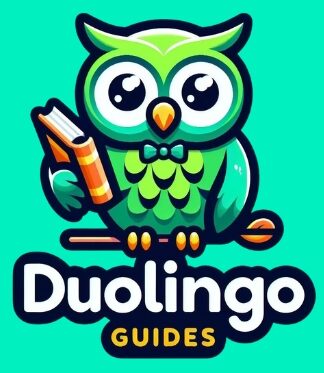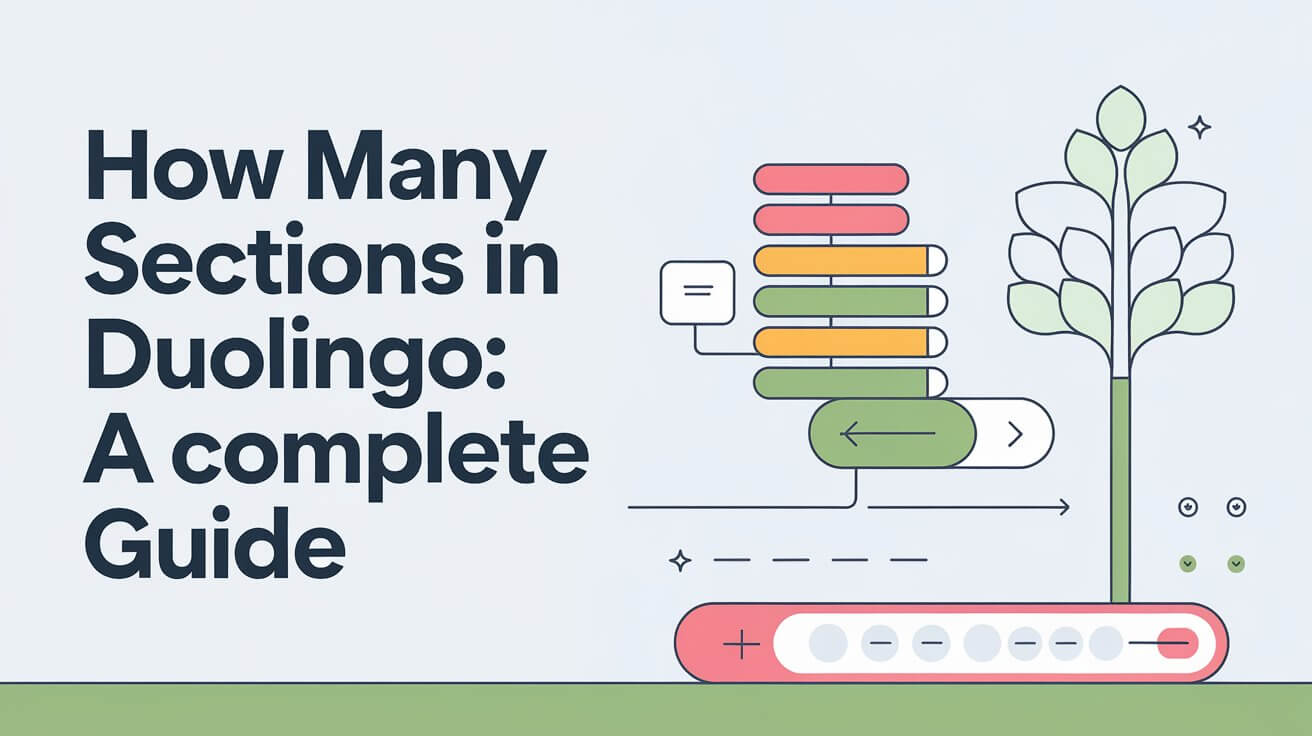Duolingo’s language courses are split into sections, with the number varying from 3 to 9 depending on the language. These sections help users learn step-by-step. This guide examines how different languages are organized, where sections fit in the learning process, and ways to get the most out of your studies.
Duolingo’s Course Structure
The Basics of Duolingo Sections
Duolingo divides its language courses into sections, each focusing on specific skills and topics. These sections act as building blocks, gradually increasing in complexity as you advance through the course.
A typical Duolingo section contains:
- Multiple units
- Varied lesson types
- Skill-specific exercises
- Review activities
The app’s design encourages consistent practice, with each section reinforcing previously learned material while introducing new concepts.
Differences Between Languages
The number of sections in Duolingo isn’t uniform across all languages. Several factors influence the section count:
- Language complexity
- Course development stage
- Similarity to the learner’s native language
- Available learning resources
For instance, widely spoken languages like Spanish or French often have more sections due to extensive course development and a larger user base. In contrast, less common languages might have fewer sections as their courses are still evolving.
Sections in Popular Duolingo Courses
Spanish Course Sections
The Spanish course on Duolingo is one of the most comprehensive, boasting 9 sections. This extensive structure reflects the language’s global popularity and the course’s continuous refinement.
Spanish sections typically cover:
- Basics and greetings
- Travel phrases
- Food and dining
- Family and relationships
- Work and education
- Hobbies and leisure
- Culture and traditions
- Advanced grammar
- Idiomatic expressions
Each section builds upon the previous one, creating a solid foundation for Spanish language skills.
French Course Sections
Similar to Spanish, the French course on Duolingo also features 9 sections. This robust structure caters to the language’s complexity and cultural richness.
French sections often include:
- Introductory phrases
- Daily life vocabulary
- Shopping and numbers
- Describing people and things
- Travel and transportation
- Education and professions
- Arts and entertainment
- Politics and current events
- Literature and philosophy
The French course’s section layout allows learners to progress from basic conversations to more nuanced discussions.
German Course Sections
The German course on Duolingo comprises 7 sections, striking a balance between thoroughness and manageability.
Typical German sections encompass:
- Basics and introductions
- Food and drink
- Travel and directions
- Home and family
- Work and study
- Arts and media
- Advanced topics and idioms
This structure accommodates German’s grammatical intricacies while maintaining an engaging learning pace.
Less Common Language Courses
Sections in Asian Language Courses
Asian language courses on Duolingo often have fewer sections due to their distinct writing systems and grammatical structures. For example:
- Japanese: 6 sections
- Chinese: 5 sections
- Korean: 5 sections
These courses focus heavily on writing systems in early sections before progressing to more complex language use.
Sections in European Language Courses
Less widely studied European languages typically have 4-5 sections. For instance:
- Norwegian: 7 sections
- Dutch: 5 sections
- Irish: 5 sections
These courses efficiently cover essential language skills within a compact structure.
Duolingo’s Learning Path and Sections
How Sections Fit into the Learning Path
Duolingo’s learning path integrates sections seamlessly, creating a structured journey through the language. Each section represents a milestone in the learning process, with clear objectives and skill benchmarks.
The learning path:
- Introduces new concepts gradually
- Reinforces previous learning
- Adapts to individual progress
- Provides a visual representation of advancement
This approach helps learners stay motivated by showcasing their progress through completed sections.
Progressing Through Sections
Advancing through Duolingo sections requires consistent effort and practice. The app uses a spaced repetition system, revisiting learned material at optimal intervals to enhance retention.
To progress effectively:
- Complete daily goals
- Review past lessons regularly
- Tackle new challenges progressively
- Use timed practices to improve speed and accuracy
Language learning requires patience. Consistent, gradual progress leads to better results than hurrying through lessons.
The Content Within Duolingo Sections
Types of Lessons and Activities
Duolingo sections incorporate various lesson types to keep learning engaging and effective:
- Translation exercises
- Listening comprehension
- Speaking practice
- Grammar drills
- Vocabulary matching
- Story-based lessons
This diverse approach caters to different learning styles and reinforces language skills from multiple angles.
Skills Covered in Each Section
Every Duolingo section targets specific language skills:
- Vocabulary expansion
- Grammar rule application
- Pronunciation improvement
- Reading comprehension
- Writing proficiency
- Cultural knowledge
As learners progress through sections, they build a well-rounded set of language abilities.
Comparing Duolingo Sections to Traditional Language Learning
Advantages of Duolingo’s Section-Based Approach
Duolingo’s section structure offers several benefits over traditional language courses:
- Flexibility in learning pace
- Immediate feedback on progress
- Gamified elements for motivation
- Accessibility across devices
- Consistent exposure to the target language
These advantages make Duolingo an attractive option for busy learners or those seeking a supplement to formal language education.
Potential Limitations
While Duolingo’s section-based learning is effective, it has some limitations:
- Less emphasis on free-form conversation
- Limited cultural context in some courses
- Potential for plateau in advanced stages
- Lack of personalized instructor feedback
Recognizing these constraints helps learners supplement their Duolingo practice with other resources when needed.
Tips for Efficiently Completing Duolingo Sections
Setting Goals for Section Completion
To make steady progress through Duolingo sections:
- Establish daily XP targets
- Aim to complete one unit per week
- Challenge yourself with timed practices
- Participate in leagues for extra motivation
- Use streaks to build a consistent habit
Balance ambition and realistic expectations to stay engaged long-term.
Balancing Multiple Sections
Some learners tackle multiple language courses simultaneously. To manage this effectively:
- Focus on one primary language
- Set different goals for each course
- Alternate days between languages
- Use each language in real-life contexts
- Review completed sections regularly
This approach prevents confusion between languages while making progress in multiple courses.
The Future of Duolingo Sections
Potential Changes and Updates
Duolingo continuously refines its course structure. Future updates might include:
- More interactive speaking exercises
- Enhanced cultural content within sections
- Expanded advanced-level sections
- Integration of AR/VR technologies
- Personalized section recommendations
These potential changes aim to create an even more effective and engaging learning experience.
User Feedback on the Section System
Duolingo values user input in shaping its courses. Common user suggestions include:
- More conversational practice
- Additional writing exercises
- In-depth grammar explanations
- Customizable section order
- Expanded content for advanced learners
The app’s developers often incorporate user feedback into course updates, continuously improving the section-based learning system.
Final Thoughts
Duolingo’s section-based approach offers a structured, engaging way to learn languages. With courses ranging from 3 to 9 sections, learners can progress at their own pace while building a solid foundation in their chosen language.
To get the most out of Duolingo sections:
- Practice consistently
- Engage with all lesson types
- Supplement with external resources
- Set achievable goals
- Celebrate your progress
Remember, language learning is a journey. Embrace the process, enjoy the cultural insights, and watch your skills grow section by section.







